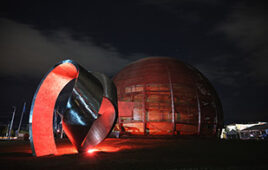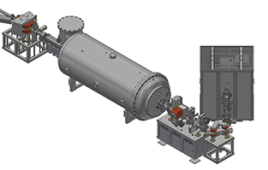Using a unique combination of materials, scientists have overcome many of the current barriers to developing lithium-air batteries, a new study reports. Lithium-air batteries could theoretically give electric cars the same range as gasoline ones without requiring excessively heavy battery packs, but several major pitfalls have stopped this battery model from meeting its potential. The battery’s design involves a lithium metal negative electrode, a non-aqueous electrolyte, and a positive electrode that work in concert. For some designs, the formation of lithium peroxide during discharge (the period when the battery provides voltage) competes with a number of undesirable side reactions that attack the electrolyte and reduce the battery’s overall efficiency. Furthermore, the discharge particles from this model can clog the small pores of the receiving electrode. To sidestep these problems, Tao Liu et al. designed their battery around the production of lithium hydroxide. A key step was the addition of lithium iodide, which reduces resistance. A second key difference was the use of macroporous reduced graphene oxide as the receiving electrode. The large pores allowed for greater collection of discharge crystals. The researchers’ battery also showed a high tolerance for water, something not typical of a lithium-air cell. These improvements, which offer high efficiency and the option to repeatedly recharge, could speed up the development of a commercially viable lithum-air battery
Related Articles Read More >

ABB and CERN identify energy-saving opportunity in heating and ventilation motors

New NPL neutron facility boosts UK’s nuclear energy, defense, and fusion research capabilities

Thermo Fisher Scientific sets 2030 renewable goal with solar developer ib vogt

